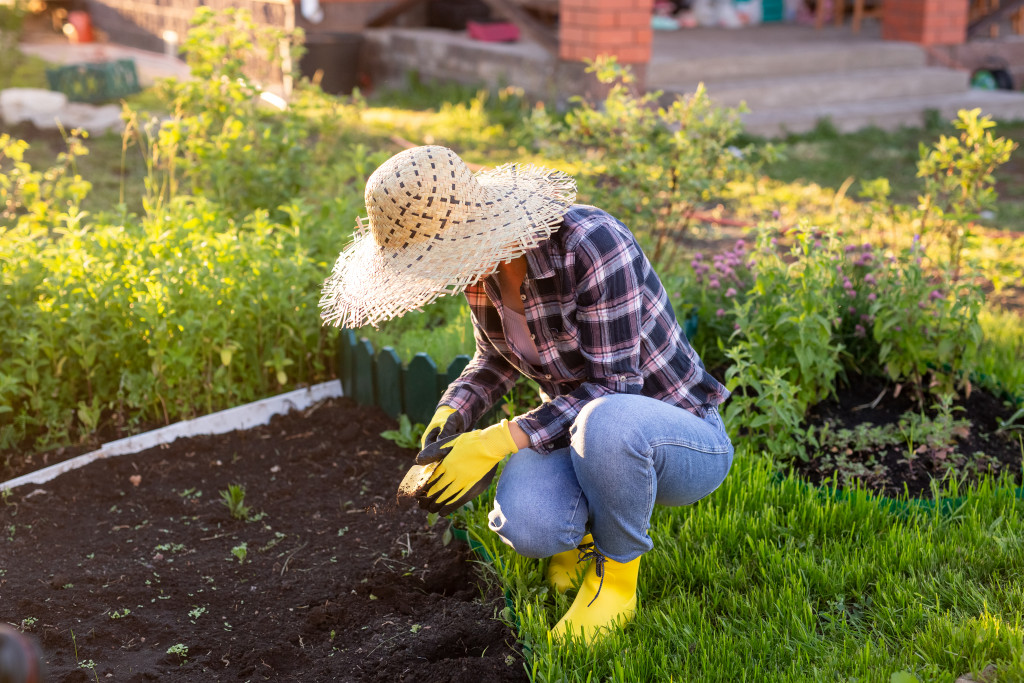The benefits of having a home garden are many. A few are that home gardens help improve air quality, provide wildlife habitat, and save you money on groceries.
According to the National Gardening Association, home gardens improve air quality by absorbing carbon dioxide and other pollutants from the air. They also provide a habitat for birds, butterflies, and other wildlife. And finally, home gardens can save you money on groceries. The NGA reports that the average household spends $600 per year on groceries, while families with home gardens spend only $300 per year on groceries.
If you’re interested in starting your home garden, here is a step-by-step guide to help you get started.
Prepare the Ground
If you’re planning to start a garden, you’ll need to prepare the ground first. Remove any large rocks or sticks from the area, and then use a shovel to loosen the soil. If the soil is too hard, you can use a hoe to break it up. Once the soil gets loosened, rake it smooth.
Unfortunately, it might not be that simple. If the ground is too hard, you might need to use a rototiller. It is a machine that will loosen the soil for you. You can usually rent one from your local hardware store. There is also a chance that there is not much ground to work with, making it necessary to find a company supplying bags of topsoil, ensuring you can create a rich foundation for your garden.
If you’re planting vegetables, dig a hole for each plant. The hole should be twice as deep as the plant’s container and double as wide. If you’re planting flowers, you can dig individual holes or plant them in rows.
Starting a garden is a great way to improve air quality, provide wildlife habitat, and save money on groceries. With a bit of preparation, you can have a beautiful garden.
Identify Your Plants
Once you’ve prepared the ground, it’s time to choose what you want to plant. Do you like vegetables, fruits, flowers, or above? Once you know what you want to grow, research what plants will do best in your area. You can talk to your local nursery or Extension office for help.
When choosing plants, think about how much sun and shade they need. Some plants need full sun (6 or more hours of direct sunlight), while others need partial sun (3-6 hours of direct sunlight). Some plants need full shade (less than 3 hours of direct sunlight).
It would help if you also considered how big the plant would get when fully grown. It is essential because you don’t want the plant to overcrowd your garden.
Once you’ve chosen your plants, it’s time to get them ready to plant. If you’re starting with seedlings (plants that have already begun to grow), you’ll need to transplant them into your garden. Gently remove the plant from its container and place it in the hole. Fill the gap with the soil, and then water the plant well.
If you’re planting seeds, you’ll need to sow them in rows. First, mark out a row with a string or a stick. Then, using a hoe or your fingers, make a furrow (a shallow trench) in the soil. Sow the seeds in the track, and then cover them with soil—water the row well.
Once you’ve planted your seeds or seedlings, it’s essential to keep them watered. Water them every day, or as needed, until they’re established. After that, you can water them once or twice a week, depending on the weather.
Garden Maintenance

Once your plants are in the ground, you’ll need to do some maintenance to keep them healthy. It includes weeding, fertilizing, and pest control.
Weeding is essential to keeping your garden healthy. Weeds steal nutrients and water from your plants. They can also harbor pests and diseases. Pull weeds by hand or use a hoe to remove them. Be sure to get the roots, so they don’t grow back. Weeds can be bad for the garden, making it necessary to get rid of it.
Fertilizing helps your plants grow strong and healthy. You can use commercial fertilizer or make your compost. Compost is made from organic matter—such as leaves, grass clippings, and fruit peels—that has been broken down by bacteria and fungi. It’s an excellent way to add nutrients and beneficial organisms to your soil.
Pest control is essential to keeping your plants healthy. Pests can damage plants, spread diseases, and ruin your harvest. To control pests, you can use traps, barriers, or chemicals. You can also encourage predators—such as birds, bats, and ladybugs—to help control the pests in your garden.
Gardening is a responsibility that everybody should prioritize. Fortunately, there are benefits to doing it yourself. If you can’t maintain a garden, you can get some plants and put them in pots. You will still benefit from fresh air, improved mental health, and physical activity.
Final Thoughts
Gardening is a fun and rewarding way to spend your time. It’s also a great way to improve your health and save money. With some planning and effort, you can have a beautiful garden that provides fresh air, exercise, and healthy food.




